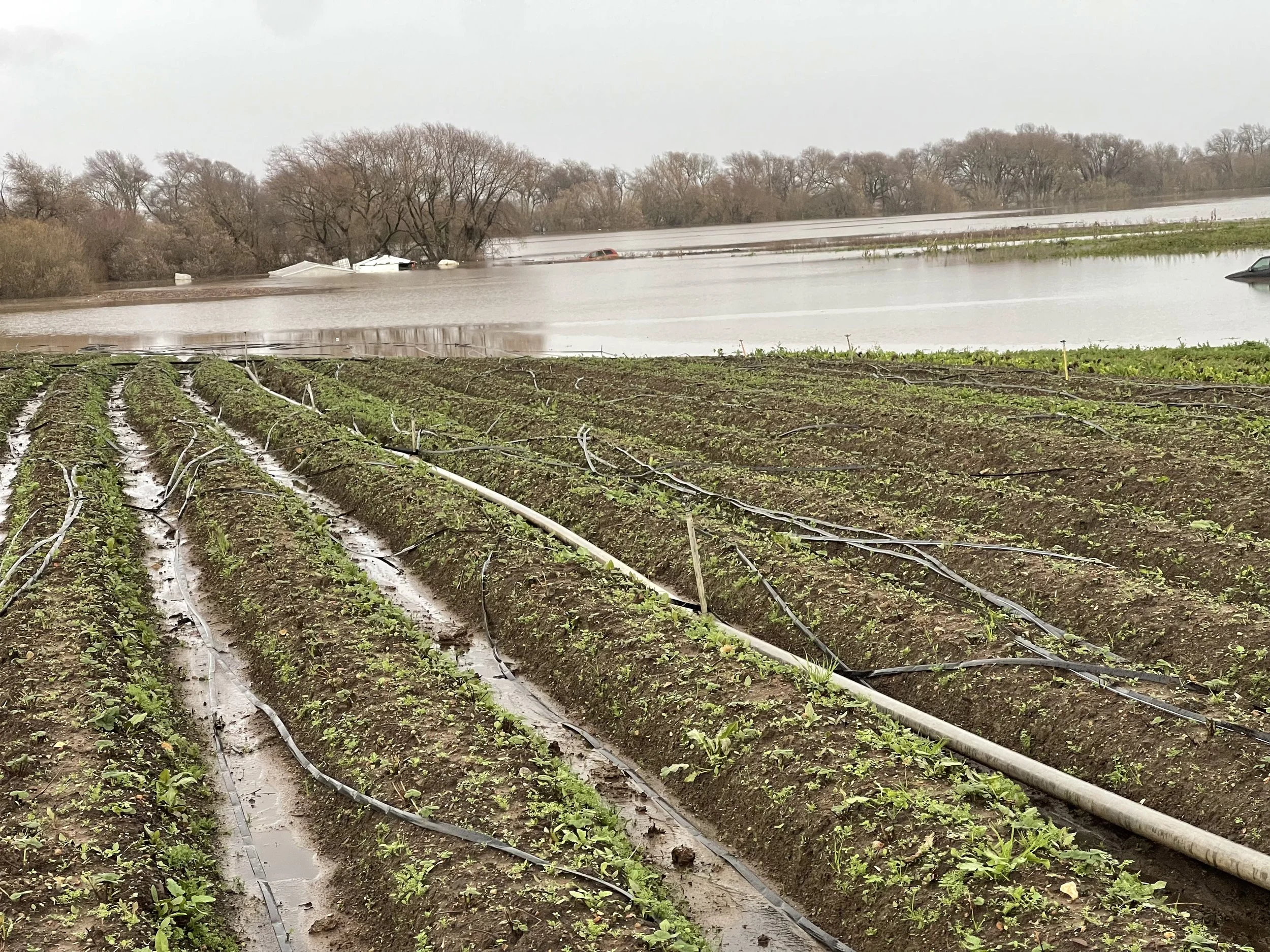Originally published on January 30, 2023 in the Napa Valley Register.
The last few weeks you probably noticed a little extra sand at the bottom of your lettuce heads when prepping a salad. A veteran lettuce eater will tell you that rain always causes an extra bit of soil and sand to creep into the leaves of lettuce heads. And while sandy salad is never pleasant, it is a minor inconvenience compared to both the good and the bad that resulted in California’s recent bombardment of atmospheric rivers.
After a few consecutive weeks of rain in California, many are breathing a bit easier knowing that we replenished some water in our reservoirs this year. This winter is still considered a La Niña year, which often comes with drought in California, but this January’s global weather patterns brought California a big round of atmospheric rivers.
On my farm in the Capay Valley, we calculated an estimated 19.5 inches of rain since the first September rains of 2022. This is a great improvement over the 16.6 and 5.6 inches of rain we measured in the last two rainy seasons, but it still keeps us in a serious drought condition for the coming summer.Ori
What hurts California’s water systems and farmers is when we do not receive rain in the spring months, causing farmers to irrigate early and temperatures to prematurely warm up. So let me say it loud and clear, California is still very much in a precarious drought state if we do not receive a significant amount of rain in the coming months.
Last week I attended the EcoFarm conference in Asilomar, an incredible grouping of farmers, ranchers, and food system changers to learn about, share in and discuss ecological farming and the food system. Aside from being inspired by so many people committed to improving the sustainability and equality of farming, I also gained new perspective and knowledge on the future of farming in California’s changing climate.
The pendulum of drought years and rainy years in California has always existed, but with climate change the swings of this pendulum will last longer and swing to more extreme levels of drought and rain. In addition, our overall climate is warming, meaning warmer temperatures during California winters.
In a talk I attended by the UC Davis professor Dr. Amelie Gaudin, she shared that eventually California will no longer be able to grow our main cash crops like walnuts, pistachios, almonds and stone fruit. Surprisingly, this is not because of lack of water, but rather because the total number of chill hours during the winter will not be enough to trigger the plant’s biology to produce flowers and thus fruit. This means that in our lifetime, we will likely see the end of one of California’s main economies.
We are living climate change in California, and it will undeniably be a driving force in our future. We still can and should do everything in our power to reverse its cause, but we must also adapt to this new future. That means continuing to support ecological farming practices and green economies, but it also means working with our natural landscape to be more intelligent with water.
In another talk I attended by Dr. Graham Fogg of UC Davis, he shared information on how we can better capture water in our ground water during these years of massive rain and flooding.
The California Central Valley is filled with networks of underground ancient rivers. These ancient rivers, or paleochannels, are massive aquifers that have the potential to absorb and hold incredibly large quantities of water. But for these ancient rivers to take a “Big Gulp” of water during rainy years, they must be discovered and protected. Unfortunately, cities, dumps, and housing developments are actively threatening this perfect way for California to replenish its aquifers.
The last few weeks of rain undoubtedly brought a temporary sigh of relief to many California farmers, but it also caused uncalculated harm to many of our state’s most vulnerable farmers. The California Central Coast was disproportionately affected by the storm’s violence and rising rivers. And while many of saw President Joe Biden on the news in downtown Capitola visiting the wreckage of its coastline, you may not know that most of Santa Cruz and Monterey County farmers were severally harmed by the floods.
For some farmers, that meant their crops were underwater for several days, or their pack sheds experienced flooding. For others, it meant losing their whole farms, all their inventory and equipment, and even their homes. I know a dozen Latine farmers in the Central Coast who must now start their farms from scratch, who may lose their organic certifications due to the floods, or who may not be able to pay their employees in the coming months. This includes Napa Farmers Market farmers such as Picoso Farm, who lost equipment and have waterlogged fields.
It is hard to know what is worse, ash or mud on the food California farmers grow. What we do know is the future will undeniably bring us as many years of drought and wildfires as years of rain and flooding. But it is never too late to make a change, and one of the best ways to do so is by supporting your local and sustainable food system. With that, I will see you at the Napa Farmers Market next Saturday!
If you would like more information on how to support Central Coast farmers affected by the floods, visit kitchentableadvisors.org.
